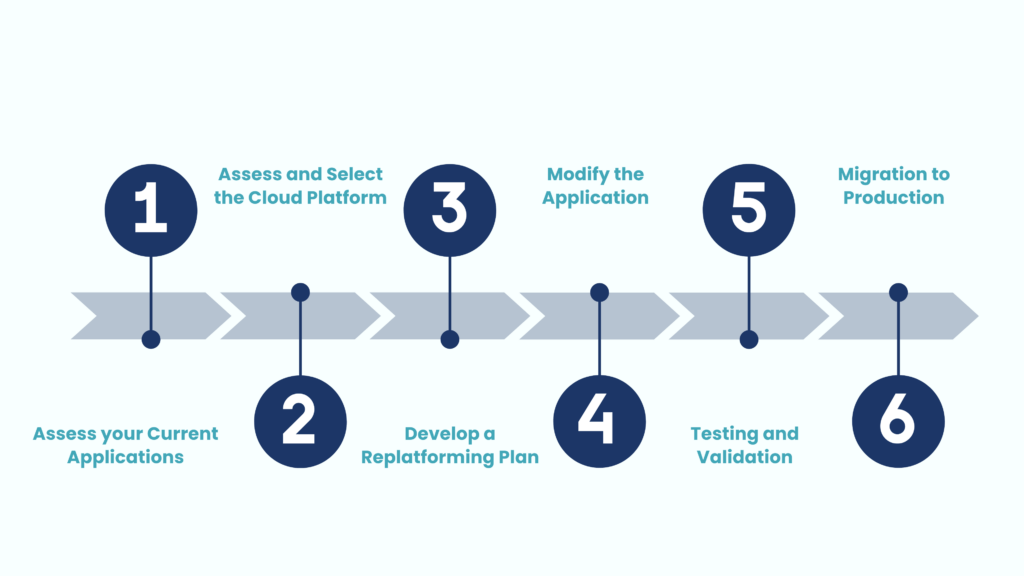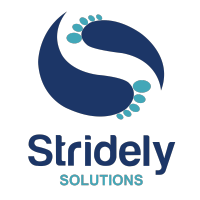Using a legacy application may seem convenient. It still handles business tasks and avoids significant investments upfront. However, without application replatforming, companies risk accumulating technical debt—a challenge that often translates into security vulnerabilities, an inability to scale, poor performance, high maintenance costs, and difficulties attracting new clients.
You might have encountered numerous instances where businesses struggled to thrive without replatforming their applications. Does every business need to replatform? Not necessarily. Some companies manage to use legacy technology for core, customer-facing apps effectively. But, when the decision to replatform is considered and it aligns with the company’s goals, it will pave the way for broader business opportunities in future.
In this article, we shall explain the concept of application replatforming solutions, when and why to replatform, best practices for replatforming, and the benefits that come with it.
Understanding Which App Replatform It Is
Application replatforming is a commonly used approach to legacy application modernization. It involves the migration of applications from one architecture or software platform to another. This process often includes changes to the tech stack, databases, programming languages, and app infrastructure.
One of the most common forms of replatforming is cloud migration. Replatforming and cloud migration services are strategies that adapt legacy systems to operate efficiently in the cloud without overhauling their core architecture. By introducing minimal changes, businesses can take advantage of cloud-native features like auto-scalability, enhancing application functionality and cost efficiency.
Application Replatforming solutions have seen significant adoption in recent years. According to a G2 report, one in three organizations wants to migrate from legacy to cloud platforms by 2025. This trend underscores the growing demand for replatforming to the cloud.
Benefits of Application Replatforming Solutions
Replatforming promises various key benefits:
Enhanced Performance
Optimizing applications for modern platforms results in improved speed and efficiency. A notable example is Airbnb, they replatformed their main application to handle global demand more effectively. They saw a reduced page load times by 50%, which enhanced user experience and customer retention rate significantly.
Cost Efficiency
Replatforming focuses on updating specific components rather than rebuilding entire systems which helps in reducing operational expenses and achieve better ROI.
Better Security and Compliance
Modern platforms enable the implementation of advanced security features and adherence to regulatory standards.
Increased Availability
Replatforming removes redundancy and failover capabilities that ensure reliable application access. It allows continuous availability, minimizes downtime, and boosts user satisfaction.
Learn More – Data Strategy for Manufacturing Firm – A Must Have
Adoption of New Technologies
Replatforming makes things easier for your application by integrating with modern technologies. By moving to a more modern platform, you can take advantage of the latest features and innovations that can help improve your app’s performance, security, and overall user experience.
When and why to Replatform?
Application replatforming solutions are majorly needed for upgrading technology stacks, adopting modern technologies, and modernizing applications. It enhances performance, scalability, security, and agility.
Here are some common scenarios where replatforming makes sense:
Cost Concerns
Maintaining legacy systems can become too expensive due to hardware maintenance, outdated software, and licensing costs. Transitioning to modern platforms—such as cloud environments—can significantly reduce operational costs.
Performance Issues
When legacy applications struggle with scalability and performance over time as business expands leading to bottlenecks. Companies also need to comply with GDPR or HIPAA when entering a new market. These policies often have standards for modern platforms.
Security Risks
When legacy systems face security issues that cannot be adequately addressed without modernization.
Innovation Needs
When existing applications cannot support new features and integrations that legacy systems cannot support.
How Does Replatforming Work? Step-by-Step Process

Assess your Current Applications
The replatforming journey begins with a comprehensive audit of the existing application. This audit examines the application’s architecture, dependencies, performance metrics, and limitations. This analysis forms the foundation for creating an effective application replatforming solutions strategy, serving as a baseline for evaluating post-migration improvements.
Assess and Select the Cloud Platform
The next step is to choose the right cloud platform. It is very critical to consider factors like scalability, security features, cost, compatibility with existing systems, and the platform’s ability to support long-term business goals.
Develop a Replatforming Plan
The next step is to create a detailed replatforming plan which outlines the steps required for transitioning the application, incorporating cloud-native features, and minimizing risks.
Modify the Application
This step involves updating infrastructure, reconfiguring databases, integrating new APIs, or enhancing security protocols. These changes are designed to improve the app’s performance and take advantage of cloud-native features.
Testing and Validation
The next step is rigorous testing. This step ensures that all changes function as expected, performance benchmarks are met, and there are no security vulnerabilities.
Migration to Production
Once validated, the application is migrated to the production environment. This phase is carefully executed to maintain availability and minimize downtime for end-users. Monitoring tools are employed during this period to track performance and identify any potential issues in real time.
Learn More – Enterprise IoT: Business Advancement Solution
Best Practices for Legacy Application Replatforming
Robust Data Migration Strategy
Data migration is key to the integration and seamless transfer of data from legacy systems to the new platform. This involves meticulous planning of the data cutover process to minimize downtime and disruptions. Before initiating, creating a comprehensive data backup and restoration plan is essential. There should be clear communication with stakeholders regarding the plan.
Optimize Application Architecture
Adopting cloud-native design patterns or microservices can really enhance performance and scalability. By optimizing, we have to find and remove potential bottlenecks which can hinder the whole process. Also, alignment of architecture with compliance standards like GDPR, PCI-DSS, or HIPAA ensures regulatory compliance and protects sensitive data.
Incorporate DevOps practices
DevOps integration in the process of replatforming increases efficiency and reliability. A robust CI/CD pipeline helps automate build, test, and deployment processes to ensure continuous application releases. Automated testing with unit, integration, and end-to-end tests validates the application’s functionality and performance during transition. With Application Replatforming solutions, DevOps practices can improve quality overall, and facilitate a smooth migration to the new platform.
Partner with Stridely for Application Modernization Consulting Services
Replatforming your application goes beyond just migrating it to some other environment —it’s an opportunity to align your software with the evolving needs of your business. Starting with a detailed audit and a clear plan, you can begin a smooth and less risky move into the cloud.
Contact Stridely Solutions for Application Replatforming and learn how we can drive innovation and optimize your enterprise operations.


